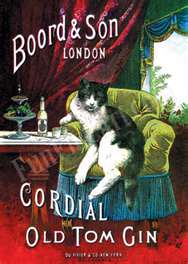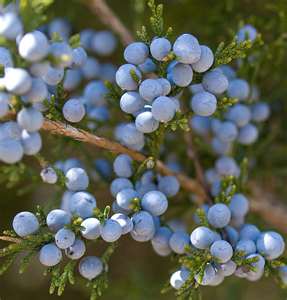Gin is a light-bodied liquor usually made from a mash of wheat or rye. Its flavor and aroma come entirely from botanicals added during distillation. Gin distillers add juniper berries and anywhere from four to fifteen other botanicals such as coriander seed, licorice root, fennel seed, cubeb berries, cinnamon bark, nutmeg, aniseed, grains of paradise, cassia bark, sweet or bitter orange peel, cardamom seeds, Angelica root, lemon peel, orris root, callamus root, caraway seed, almond, savory, lime peel, grapefruit peel, dragon eye, saffron, baobab, frankincense, rose petals, and cucumber.
Dr. Franciscus Sylvus, a Dutch chemist, created gin in the 16th century as a means to cleanse the blood of those suffering from kidney disorders. He named it genievre, French for juniper. In tropical British colonies, gin was used to mask the bitter flavor of the quinine used to prevent malaria. Quinine was dissolved in tonic water, which became the origin of today’s Gin & Tonic.
GIN STYLES
- London Dry is the most common. It is dry (not sweet), tastes distinctly of juniper berries, and is most commonly used in martinis. Examples include Beefeater, Tanqueray, and Bombay Sapphire.
- Plymouth is a clear, slightly fruity, full-bodied gin that is very aromatic. It originated in the port of Plymouth on the English Channel. The Coates & Co. distillery brought it to the US in 2002 and it is becoming increasingly available.

- Old Tom is a sweeter version of London Dry. It was the most popular gin in the 19th century and was the original gin used to make a Tom Collins. Haymans has reintroduced this style but it is not commonly available in the US.
- Genever is the Dutch version of gin. It is made from “malt wine” — a mixture of malted barley, wheat, corn, and rye — and produces a fuller-bodied spirit similar to raw malt whiskey. It is often aged in oak casks for one to three years. Oude (old) Genever is the original style, relatively sweet and aromatic with a straw hue. Jonge (young) Genever is drier and lighter. Genever is popular in the Netherlands and Belgium. Some Genever is distilled directly from fermented juniper berries producing an intense flavor.
- New Western Dry is a recent addition to gin styles represented by such brands as Hendricks, Aviation, and No 209. This style downplays the juniper in favor of other sometimes eclectic aromas like rose, lavender, citrus, cardamom, and cucumber. Hendricks Gin, made in Scotland, was released in 2000 and is considered a pioneer of New Western Dry. It is a delicate spirit with faint cucumber and rose aromas leaving the taste of juniper understated.
Most quality gin is distilled in column stills. The resulting spirit is high-proof, light bodied, and clean with minimal impurities. Genever is distilled in pot stills which results in a lower-proof, more flavorful spirit.
Flavoring is added to gin on the third distillation either by directing alcohol vapors through a chamber where dried juniper berries and other botanicals are suspended, or by distilling botanicals individually with high-proof alcohol and mixing in the resulting oils.
The US is the world’s largest gin market and London Dry style accounts for the bulk of domestic production. US gin tends to be lower proof and less flavorful than English gin. America’s best-selling gin, Seagram’s Extra Dry, is a rare cask-aged gin. Three months of aging in charred oak barrels give is a pale straw color and a smooth taste.
_______________
“What contemptible scoundrel has stolen the cork from my lunch?” — WC Fields (who reportedly drank two quarts of gin a day)

